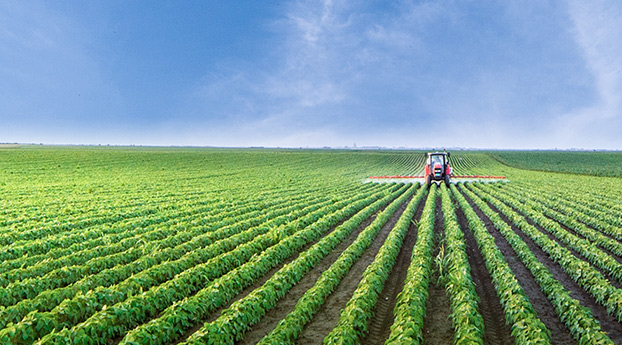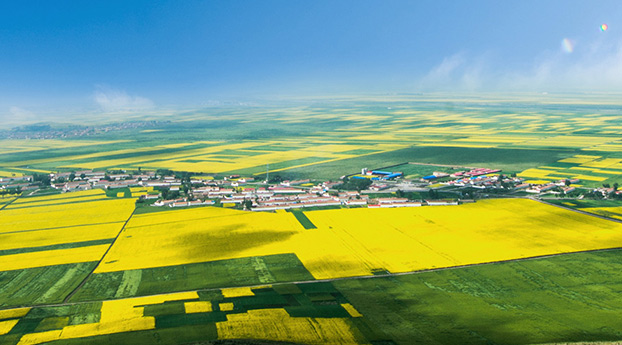Research on agricultural Water price Reform under Water saving target
Release time:2015-01-23 Views:81
【作者】 曹金萍;
【导师】 胡继连;
【作者基本信息】 山东农业大学 , 农林经济管理, 2014, 博士
【副题名】以山东省主要灌区为例
【摘要】 我国水资源短缺,农业用水数量巨大,但水资源利用效率特别低。理论研究与现实实践均已证明,水价偏低是导致农用水资源浪费的主要原因。过低的水价,不仅失去了水资源消费的约束作用,而且激励了浪费性用水。研究农业水价改革,促进农业节水,具有重要现实意义与学术价值。本文以相关经济理论为指导,深入实际,对山东省的农业用水及灌区发展情况、山东的农业水价制度、山东省典型灌区(主要包括引黄灌区、水库灌区、井灌区、小水源灌区等)的水价情况、山东省农业水价综合改革实验情况,进行了详尽的调查研究,得到了大量一手资料。本文研究主要依托这些调研资料而进行。本文的主要研究内容与结论如下:(1)山东省灌溉农业发达,农业用水数量巨大。山东省的主要灌区包括引黄灌区、水库灌区、井灌区、引河(湖)灌区、小水源灌区等多种类型。(2)山东省各主要灌区的农业用水基本实行供水成本定价法确定水价,执行终端水价制度,各灌区的水价计收方式略有不同,其中,引黄灌区和水库主要按照灌溉面积收费(按亩收费),井灌区按灌溉用电量收费,其他灌区(含引河引湖灌区、山区小水源灌区等)按方收费、按亩收费、按用电量收费三种方式都有存在。山东省农业水价制度中的主要问题是水价计收方式单一、办法落后。(3)引黄灌区是山东省最为典型的灌区。引黄灌区的农业水价长期执行国家行政定价,主体水价0.56分/m3,各个灌区大同小异。灌区水价的主要问题是水价低、水费收缴难,实际执行水价很低,有的灌区甚至不足1分/m3,严重扭曲了水价面貌,影响了水资源的有效利用。(4)水库灌区也是山东比较重要的灌区。水库灌区的农业水价也是由政府统一确定,基本维持在0.10元/m3左右,主要问题也是水价低,效率差。(5)其他灌区的农业水价实行实际成本核算制,一般是根据实际发生的成本核算水价,其中的主要成本项目是机械设备费和燃料动力费(柴油或电费)。现有的主要问题是成本核算不完整,实际水价被低估。(6)为了改革农业水价,山东省已经尝试过一些改革实验,其中,最为重要的是终端水价改革实验和水价提补实验,两类实验都取得了很好的效果,为水价改革创造了经验,但也存在实验面窄,推广应用条件苛刻等问题。(7)针对调研中发现的现实问题,本文提出农业水价综合改革对策建议如下:广泛推行终端水价制度,全面对农业用水进行田间地头上的计量收费;创新农业用水价格形成机制,采用“节水成本定价法”确定农业水价水平,作为农用水提价的主要参照;多种形式提高农业水价,如两部水价制、水价提补、项目水价制等;引黄和水库灌区加强水费收缴管理,消除欠费问题,还原真实水价;井灌及分散水源灌区加强成本核算,推行完全成本水价。
【Abstract】 In China, water resources are in short supply and the quantity of agricultural water using is massive, whereas its utilization efficiency is at a surprisingly low level. Theoretical and practical researches have proved that the lower price is the main cause for agricultural water wasting. The extremely lower water price not only loses its constraints for water consuming but also motivates water-using wasting. Thus, it has great realistic significance and academic value to study the agricultural water price reform to promote agricultural water saving.Based on some relative economic theories, we made a detailed investigation in Shandong province. Our investigation includes the following four aspects: the development of agricultural water and irrigation areas, the system of agricultural water price, and current situation of water price in the typical irrigation areas(including yellow-river irrigation area, reservoir irrigation area, well irrigation area, canal-digging/lake-leading irrigation area, small-sized irrigation area etc) and the comprehensive reforming experiment of agricultural water price. We have obtained quantities of first-hand information and our study is mainly based on these massive investigation materials.The main contents and conclusions are as follows:(1) The irrigation agriculture in Shandong Province is in a higher level and the quantity of agricultural water using is massive. The major type of irrigation areas in Shandong Province include yellow-river irrigation area, reservoir irrigation area, well irrigation area, canal-digging/lake-leading irrigation area and small-sized water source irrigation area etc.(2)The agricultural water pricing method is mainly based on water supply cost in major irrigation areas in Shandong province. By implementing terminal water price system, the calculating method of water price has slight differences in different irrigation areas. The fees of yellow-river irrigation area and reservoir irrigation area are charged in accordance to the irrigation area(i.e. charging by “Mu”), while the fees of the irrigation area is charged by irrigation power consumption. Concerning the other irrigation areas(canal-digging / lake-leading irrigation area and small-sized water source irrigation area), the fees are charged either by “Fang”, “Mu” or power consumption. The principal problems of Shandong agricultural water price system are the singleness of its calculating and the backwardness of its method.(3) Yellow-river irrigation area is the most typical irrigation area. And its agriculturalwater price implements the state administrative pricing for a long time. The standard priceis 0.56 Fen(100 Fen=1Yuan) per cubic meter while the other irrigation areas are almost thesame. The major problems of the irrigation areas are lower price, difficult fee-collectingand the implementing water price is extremely low. In some irrigation areas, the price evencan not reach to 0.01 Yuan per cubic meter which distorts the water price system andinfluences the effective utilization of water resources.(4) Reservoir irrigation area is the comparatively important irrigation area. Itsagricultural water price is also regulated by the government and maintains its price at 0.10Yuan per cubic meter or so. The main existing problem is also the low price and lowefficiency.(5) The pricing of the other irrigation areas are charged by the actual cost. Generally, it is set by the actual using amount. The main costing items are mechanical facility fees and fuel power fees(diesel or electricity bill). The current existing problem is the incompleteness of cost-accounting which made the actual water price underestimated.(6) For reforming agricultural water price, previous attempts has made on some reforming experiment in Shandong province. Among them, the most significant ones are Terminal water price reforming experiment and water price subsidy-raising experiment, which proved to bring out better effect. On one hand, those experiments provide precious experience for reference; on the other hand, it also reflects its weakness in narrow experimental scope and limited promotion and application.(7) Focused on the problems generated from our investigation, this thesis puts forward countermeasures and suggestions for comprehensive reform of agricultural water price. They are as follows: implementing terminal water price system and charging agricultural water fees on the field; applying various forms to raise agricultural water price, such as two-part tariff system, subsidy-raising, project-pricing system, etc.; employing water-saving cost-oriented pricing to set up a standard for reference of agricultural water price-raising; enhancing the management of water rate collection to avoid arrearage and to restore authentic water price.
【关键词】 农业用水; 水价改革; 节水成本定价法; 水价提补;
【Key words】 agricultural water; water price reform; water-saving cost-oriented pricing; subsidy-raising of water price;

















